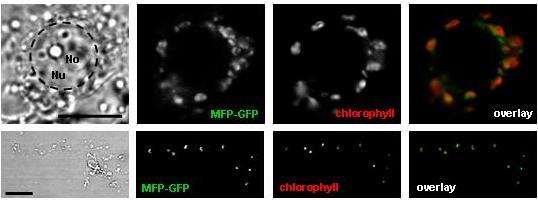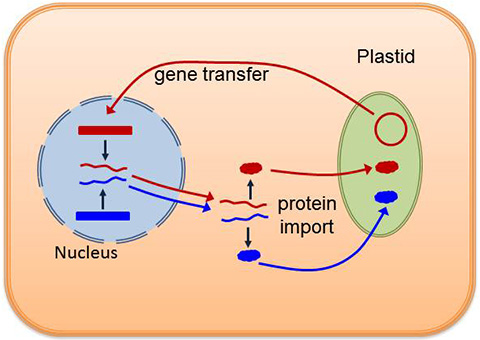 |
Dr. Annkatrin RosePlant Molecular Biologist |
||
|
COURSES |
Research InterestsThe chloroplasts of land plants exhibit unique features such as vesicle transport and formation of grana stacks that are not found in cyanobacteria and the chloroplasts of algae. I am interested in the molecular and evolutionary processes that gave rise to these features. In my lab, we are studying a group of plant proteins characterized by a "coiled-coil" structural motif. Some of these proteins appear to have been introduced into the plastids during the evolution of chloroplasts in land plants. Their predicted structure suggests that they may be involved in protein complex formation and/or membrane trafficking, stacking or fusion events.
Fig. 1: Localization of the coiled-coil protein MFP fused to Green Fluorescent Protein in a living Arabidopsis protoplast (top) and co-localization with free chloroplasts (bottom). Our working hypothesis is that chloroplasts have gained some of their unique "eukaryotic features" through co-opting these proteins from their host cells during the evolution of land plants (Figure 2). We are employing reverse genetics, microscopy, and molecular techniques to determine the functions of these proteins and gain a better understanding of the mechanisms that helped land plants to fine-tune their photosynthetic apparatus.
Fig. 2: Model of protein import into chloroplasts. Following endosymbiosis, genes of cyanobacterial origin were transferred into the nucleus and gained coding sequences for chloroplast transit peptides that allowed for protein import into the chloroplast. Other nuclear genes may have acquired these transit peptides through recombination events, now allowing originally eukaryotic proteins to be imported into the plastids as well. |
||

